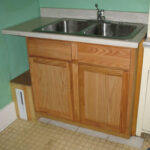Based on my experience, household water softeners are rather simple devices. Give or take a few minor variations, they consist of a cabinet, a resin tank, a brine tank, a brine line and a control valve. The control valve is essentially the brains of the operation. It is in charge of regenerating the resin tank with brine from the brine tank. If the control valve goes on the fritz, your water softener will not function as intended. As such, it should be repaired or replaced at the first signs of trouble. Thankfully, replacing a water softener’s control valve isn’t that difficult to do. Here’s how to get the job done:
Supplies Needed
In order to replace your home’s water softener control valve, you will need a new control valve, a strap wrench, a screwdriver, pipe wrenches, a pair of pliers and a can of pipe dope. Depending on your water softener’s make and model, a replacement control valve is likely to lighten your wallet by about $450. Most replacement water softener control valves may be purchased through a plumbing supply store or an appliance parts dealer. You can generally purchase the wrenches, pipe dope and screwdrivers through such establishments as well.
Prepare the Work Area
Before attempting to remove your water softener’s faulty control valve, you’ll need to prepare the area. Start by placing your water softener into bypass mode and releasing the pressure that has undoubtedly built-up in the brine tank. Brine tank pressure is normally relived by manually putting the water softener into a backwash mode. You’ll also need to shut off the electrical supply to the water softener.
Remove the Faulty Control Valve
Start by removing the water softener’s brine line. The brine line is a small hose that extends out of the side of the control valve. In most instances, the hose is held in place by a small compression nut that may be removed with the aid of an adjustable wrench.
Proceed by separating the control valve from the bypass valve. The bypass valve is located behind the control valve and near the drain line. It is generally attached to the control valve by a series of small screws and clamps. Once that is done, use the pliers to remove the drain hose. You’ll also want to disconnect the outlet pipes. At this point there should be nothing attached to the faulty control valve except the water softener’s lid. Next, use the strap wrench to remove the faulty control valve from the top of the water softener.
Install the Replacement Control Valve
Set the old control valve aside and bust out the new one. If desired, coat the threads with pipe dope. Then manually screw the new control valve into place. Once you can no longer turn the control valve by hand, grab the strap wrench. Finish attaching the control valve with the strap wrench. Afterward, reattach the brine line, the bypass valve, the outlet pipes and the drain hose. When you are done with those tasks, restore the water softener’s water supply and electricity. Then finish the job by programming your control valve as desired.
Source: Personal Experience
Killeen Gonzalez has a history of completing DIY home improvement projects with her family.
More from this contributor:
5 Reasons to Add Sago Palms to Your South Georgia Lawn
How to Fix Attic Condensation Problems: Personal Experience
How to Patch Hardwood Floors: Personal Experience
5 Routine Gutter Maintenance Tasks for Homeowners




